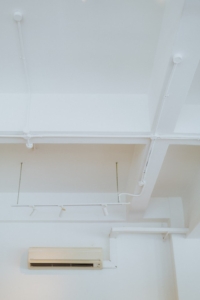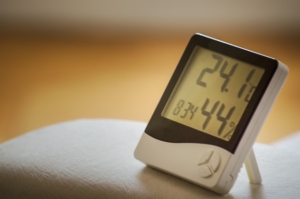How to Prevent Mold in HVAC Systems
How to Prevent Mold in HVAC Systems

HVAC systems are one of the greatest inventions of modern times; they make our homes livable in extreme weather. One of the ways the HVAC does this is by limiting air exchange between the inside of your home and the outside. The building envelope lets a house maintain a different temperature within itself than the temperature outside it.
This innovative system allows us to live a fairly consistent lifestyle regardless of prevailing weather conditions. But the system isn’t without its drawbacks. By limiting airflow between the home and the outdoors, the air inside your home is not easily diluted by fresh air from the outside. The result is that indoor air often accumulates more contaminants than outside air.
Data from the EPA shows that air pollutant levels inside the home can be 2-5 times as high as that found outside. These indoor pollutants often include asbestos, formaldehyde, or lead in paints and other construction materials; tobacco smoke; kitchen smoke; pesticides and toxic emissions from treated wood or similar items.
But by far, the biggest source of indoor air pollution is mold. That’s because the controlled climate of a modern home creates many hiding places where mold can grow. To thrive, mold needs dark, moist spaces low in oxygen. Your home’s HVAC system often meets these conditions, making it a favorite location for mold growth.
Is there mold inside your HVAC system?
If your home’s humidity level is above 60%, the chances that you might have mold in your home are high. This is especially if the high humidity issue is an ongoing problem. In addition to humidity, indoor temperatures above 60ºF also increase the possibility of mold. Below are some of the telltale signs of mold infestation in a home.
- The air conditioning smells funny

Does the A/C smell funny every time you turn it on? Do you see dark fuzzy streaks on the air filter when you replace them? If your standalone air conditioning units are always damp and located in a dark place exposed to warm temperatures, they can breed mold.
- Musty odors in the home
Mold has a characteristic odor caused by Mold Volatile Organic Compounds (MVOCs) released by mold. If your home has a musty smell that lingers even after cleaning the house, it could be because you have mold hiding in the HVAC.
- Allergies that won’t go away
Chemicals released by mold can worsen existing respiratory issues. If a member of your household suffers from asthma or allergies and the symptoms flare up and refuse to subside, it could be due to mold spores in the home.
- Strange fatigue
Constant tiredness is another sign that mold may interfere with your body’s functions. If you struggle to wake up in the morning despite having slept all night, it could be because mold is upsetting your body’s chemical balance and rhythm.
What to do if you have mold in your HVAC systems
The following steps will not only help you get rid of the mold inside your HVAC, but you will also prevent the problem from happening again.
1. Get a mold remediation expert

The procedure for dealing with mold inside an HVAC system depends on the cause of the problem. Typically, you will want a solution that takes the entire HVAC into account. That’s because mold spores may be deposited in other parts of the HVAC where there is no mold. Treating the whole HVAC will prevent the recurrence of the problem.
2. Get rid of dust inside the ductwork
In addition to the other listed factors, mold also needs food. The dust inside the HVAC ducts is what mold feeds on. If there is no dust in your HVAC ducts, there is little chance of mold growing in that space. You may not need to clean your ducts as often as you service the A/C, but this depends on how you use the system.
3. Service the HVAC on a schedule
Change filters every three months or earlier; service the A/C unit at least once a year and check the condensate drain for leaks (this is a common leak location). Make sure the coils are also cleaned. If you hire a certified HVAC technician to service the HVAC, they will typically take care of all these.
4. Monitor humidity

By simply altering one of the conditions – food, warm temperature, high humidity, and darkness – that mold needs to thrive, you make it harder for the fungus to grow in your home. Aim for indoor humidity of 40% or lower when humidity levels inside your home climb above 50%, the chances of mold growth increase exponentially.
Although mold can be deadly to human health when it grows inside a home, keeping it out of your home’s HVAC systems is not so difficult. All it takes is vigilance, along with the expertise of a reputable mold remediation company and an HVAC professional.
